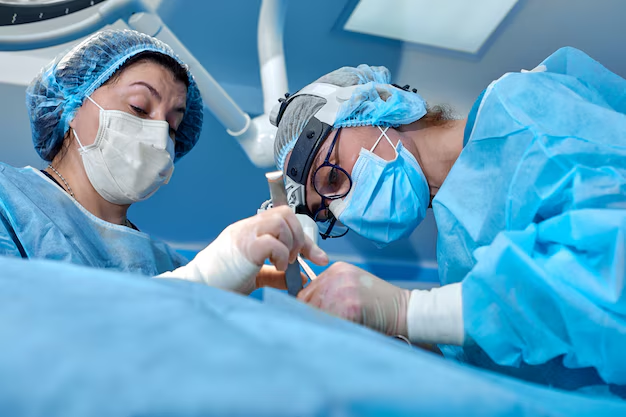Understanding Cataract Removal: A Comprehensive Guide
Imagine seeing the world through a foggy window. Colors are muted, details are faint, and everyday tasks are plagued with blur. This is a glimpse into the world of someone living with cataracts, a common eye condition that clouds the lens, leading to a decline in vision. Fortunately, modern medicine offers a remedy through cataract surgery, a procedure that restores clarity to one’s sight. In this guide, we delve into the intricacies of cataract removal, shedding light on what the procedure involves, its benefits, and what patients can expect.
What Are Cataracts?
Cataracts occur when the lens of the eye becomes clouded, often as a part of the aging process. This condition can also stem from factors such as diabetes, trauma, certain medications, or prolonged UV exposure. While they can affect both eyes, they do not necessarily develop simultaneously.
Symptoms of Cataracts
- Blurry Vision: A common initial symptom that progressively worsens.
- Faded Colors: Colors may seem less vibrant.
- Glare and Halos: Lights may cause glare, or halos can appear around them.
- Night Vision Issues: Difficulty seeing clearly in low-light conditions.
- Double Vision: Seeing two images instead of one.
How Are Cataracts Removed?
Cataract surgery is a routine procedure, commonly performed and with a high success rate. It involves removing the clouded lens and replacing it with an artificial one, known as an intraocular lens (IOL).
The Surgical Procedure
Pre-Operative Preparation:
- Consultation: Eye measurements and IOL selection.
- Medication: Eye drops to prevent infection and inflammation.
During Surgery:
- Local Anesthesia: Ensures comfort without the need for general anesthesia.
- Phacoemulsification: The most common method, where ultrasonic waves break up the lens for removal.
- IOL Implantation: The artificial lens is inserted, often through the same small incision.
Post-Operative Care:
- Follow-Up Visits: Monitors healing progress.
- Activity Restrictions: Temporary limitations on heavy lifting or strenuous activities.
- Vision Improvements: Typically noted within a few days.
Types of Intraocular Lenses
- Monofocal IOLs: Designed for one focal distance.
- Multifocal IOLs: Offer multiple focus points, reducing reliance on glasses.
- Toric IOLs: Correct pre-existing astigmatism.
Preparing for Cataract Surgery
Preparation is key for a smooth surgical experience and recovery. Here’s how patients can prepare:
- Discussion with Ophthalmologist: Clarify doubts regarding the procedure, lens options, and potential outcomes.
- Medication Adjustments: Some medications may need to be adjusted or paused.
- Transportation Arrangements: Post-op vision may be blurred, necessitating a ride home from the appointment.
The Benefits of Cataract Surgery
Cataract surgery offers numerous benefits beyond clearer vision. Understanding these can help patients make informed decisions.
Improved Quality of Life
- Enhanced Color Perception: Colors appear brighter and more vivid.
- Better Night Vision: Reduction in glare and improved contrast.
- Increased Independence: Daily tasks and recreational activities become easier to manage.
Low Risks and Quick Recovery
- High Success Rate: Modern techniques yield excellent outcomes.
- Minimal Discomfort: Most patients experience little to no pain.
- Rapid Healing: Many resume normal activities within a few days.
Potential Risks and Considerations
As with any surgical procedure, there are potential risks associated with cataract surgery. It is essential for patients to be aware and discuss these with their healthcare provider.
Common Risks
- Infection: Though rare, treated with antibiotics.
- Inflammation: Managed with anti-inflammatory medications.
- Lens Dislocation: May require further intervention.
Long-Term Considerations
- Posterior Capsule Opacity: A secondary cataract, treatable with a YAG laser procedure.
- Adjustment Period: Some might need time to adapt to the new vision.
Life After Cataract Surgery
Life after cataract surgery can be quite transformative. Patients often experience a renewed appreciation for their visual world, though adjusting to the new lens can take time.
Tips for Post-Surgery Adaptation
- Regular Follow-Ups: Essential for monitoring healing.
- Vision Aids: Temporary use of glasses for specific tasks may be needed.
- Patience and Adaptation: Adjusting to new lenses can vary in duration.
Summary: Key Takeaways About Cataract Surgery 📝
- 👁️ Clearer Vision: Cataract surgery effectively restores vision clarity.
- 🔍 Detailed Consultation: Engage deeply with your ophthalmologist to select the right IOL.
- 🏃♂️ Quick Recovery: Majority resume normal activities shortly after.
- 🌈 Enhanced Quality of Life: Enjoy vibrant colors and improved night vision.
- ⚠️ Low Risks: A highly successful procedure with minimal complications.
Removing cataracts is much more than a surgical procedure—it's a journey toward regaining visual freedom and enjoying the world with renewed sight. While the decision to undergo surgery is personal and sometimes daunting, understanding the process and potential outcomes can empower patients to make informed choices for their vision health. Whether you're preparing for surgery yourself or supporting a loved one through the process, knowledge is indeed power in navigating the path to clearer vision.
